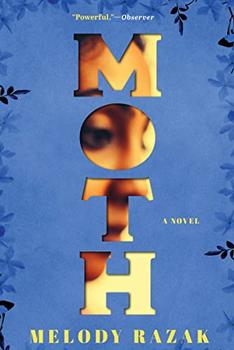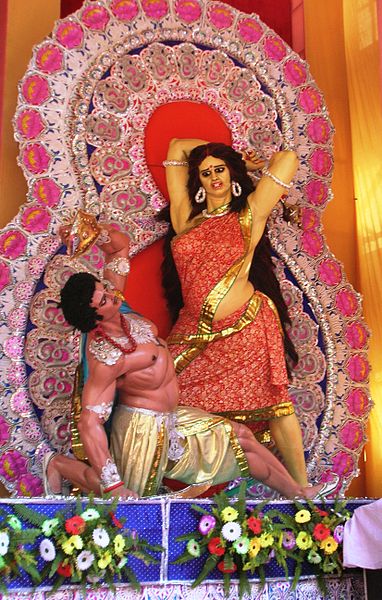Summary | Excerpt | Reviews | Beyond the Book | Read-Alikes | Genres & Themes | Author Bio

A Novel
by Melody RazakThis article relates to Moth
 In Melody Razak's novel Moth, one of the characters is fascinated by the legend of the churel, and the mythological being is mentioned several times throughout the plot.
In Melody Razak's novel Moth, one of the characters is fascinated by the legend of the churel, and the mythological being is mentioned several times throughout the plot.
A churel (also spelled "chudail," "churail" and as other variations) is a staple of South Asian folklore, encountered most frequently in India, Pakistan and Bangladesh. The being is created when a woman dies after being wronged or mistreated by her family and/or dies during pregnancy, childbirth or while menstruating. She's often described as hideously ugly, with wild hair, a pot belly, sagging breasts, boar-like fangs and a long, black tongue. She is also, however, a shape-shifter who can appear to her victims as a beautiful woman. The only constant is her feet, which perpetually face backwards regardless of her form.
The churel's primary purpose is to seek revenge for her death or mistreatment, and her preferred targets are the males of her family, particularly those who've wronged her. Some legends claim she lures young men into the forest where she sucks the vitality out of them, vampire-like, while others say she holds the men captive until they're old and gray, spending the intermediate time forcing them to satisfy her desires. Once a churel's quest for vengeance is complete, some stories suggest she becomes a dakini — a demon — who serves the Hindu goddess Kali, wreaking death and destruction at Kali's command.
It's considered challenging to get rid of this being, and so traditionally families have gone out of their way to ensure a churel isn't created in the first place — pampering new daughters-in-law during pregnancy and doing everything they can to ensure both mother and baby survive the birth. Should death occur, however, various superstitions may be followed to keep the woman's spirit from coming back. Her coffin can be taken out a side or back door — not the front — to keep her from finding her way back into the home, and the body buried rather than being cremated, contrary to usual Hindu tradition. Various means have been employed to keep the corpse in the grave as well, sometimes interring it face down, driving nails into the coffin or at the corners of the grave, weighting the coffin or grave with rocks, and occasionally going so far as to bind the body with ropes or chains. Traditions also include sprinkling mustard or millet seeds around the grave, the woman's former dwelling or her village, as it's thought she must count each seed before she can return home. An exorcism performed by Hindu priests is another possible solution for keeping a churel at bay, but even this method isn't guaranteed; the churel may still turn up weeks, months or years after a woman's death.
In recent decades, the churel has come to be viewed by some as a sort of feminist hero. The idea of a being who returns after death to punish abusive husbands has considerable appeal for many women. The 2020 Netflix film Bulbbul is a prime example of this reinterpretation of the old legend.
A depiction of a dakini, a possible final form for a churel within Hindu belief. Photo by Jonoikobangali (CC BY-SA 3.0)
Filed under Places, Cultures & Identities
![]() This "beyond the book article" relates to Moth. It originally ran in September 2022 and has been updated for the
August 2023 paperback edition.
Go to magazine.
This "beyond the book article" relates to Moth. It originally ran in September 2022 and has been updated for the
August 2023 paperback edition.
Go to magazine.
The worst thing about reading new books...
Click Here to find out who said this, as well as discovering other famous literary quotes!
Your guide toexceptional books
BookBrowse seeks out and recommends the best in contemporary fiction and nonfiction—books that not only engage and entertain but also deepen our understanding of ourselves and the world around us.